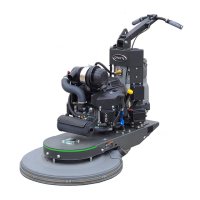28 29
ABOUT PROPANE
• Propane is ammable and commonly used as a fuel.
• The molecular formula of propane is C3H8, and it is in the family of liqueed petroleum gases (LP gases).
The other LP gases include butane, propylene, butadiene, butylene, isobutylene and mixtures thereof.
• Propane is commonly available and has proven to be a dependable, safe, economical, and clean burning fuel.
It can be used as a household fuel, industrial fuel, and fuel for internal combustion engines. Propane has been
used as a fuel since 1910.
• At atmospheric pressure, propane boils at -44 degrees Fahrenheit, meaning it typically exists as a vapor.
However, when contained under pressure, such as in a propane cylinder, it can exist as a liquid.
• Propane is naturally odorless, but includes an additive odorant, usually mercaptan, which gives it a distinct
odor similar to rotten eggs or skunk.
• Vapor propane is heavier than air, meaning it will settle in low areas such as along the ground or in drains.
PROPANE CYLINDERS (TANKS):
Propane cylinders are constructed according to ASME and Federal DOT #4ET20 pressure safety codes. All
valves and ttings are UL Listed. Propane gas is noncorrosive and will not rust the inside of a cylinder. It
is recommended to have propane cylinders inspected regularly during re-ll by an authorized National LP
Gas Association propane dealer. The fuel cylinder is supplied directly from the manufacturer and is void of
propane.
PROPANE CYLINDER CONFIGURATIONS:
Propane cylinders are constructed to function in specic congurations. The primary conguration options
are:
• Propane Withdrawal: Vapor or Liquid
• Cylinder Orientation: Horizontal or Vertical
IMPORTANT: Dierent cylinder congurations are not interchangeable.
All ONYX engines use Vapor cylinders, and the orientation can be either Horizontal or Vertical.
WARNING: NEVER use a cylinder not intended engine fuel applications. DO NOT substitute
cylinders that are used with a barbecue grill, etc.
CAUTION: Do not use propane cylinders that are liquid withdrawal cylinders, such as cylinders
for fork lift trucks or other liquid withdrawal applications.
label that say “THIS SIDE UP” or equivalent.
CAUTION: Failure to use a proper cylinder or failure to install cylinder in proper orientation will
result in liquid propane withdrawal and cause damage the regulator.
FILLING PROPANE CYLINDERS
WARNING:
• Propane cylinders should only be lled by your propane provider or by individuals who have been proper-
ly trained and certied.
• Escaping propane can freeze skin and cause frostbite and damage eyesight. Always wear safety gloves
and safety glasses when lling propane cylinders.
• DO NOT overll cylinders.
• DO NOT tamper with cylinder gauges or safety relief valves.
• At time of ll, ensure tank is in operable condition and meets all certication requirements. Discontinue
use of any cylinder that is damaged or rusted or does not comply with certication requirements. Your
propane service company will assist with compliance.
STORING & TRANSPORTING PROPANE CYLINDERS:
The NFPA Technical Committee prohibits the storage of propane cylinders in buildings. Propane cylinders
should NOT be stored in buildings used by the public or frequented by anyone passing through or who is
working in the building. Full or empty, never leave cylinders in small enclosed areas. Cylinders must be
stored in a secure, tamper-proof storage enclosure that provides safety from accident or vandalism.
Propane cylinders should always be transported either secured to the machine using cylinder straps, or
secured in an upright position during transportation.
• Relief valve opens due to over pressurized cylinder creating hazardous situation.
• Moisture in the cylinder.
• Powered engine operates initially but shuts down when propane mixture becomes too lean.
The maximum ll volume of a propane cylinder is ALWAYS considered 80% of the total cylinder volume to
allow for expansion and to ensure proper vapor withdrawal from the cylinder.
For example, if your propane cylinder is referred to as a “20 lb cylinder”, this means that when the propane
cylinder is 80% full, the weight of the propane is 20 lb.
Cylinders should be lled in the vertical position.
When lling a propane cylinder, the xed liquid level gauge should be opened (unscrewed counterclock-
wise) so it can be used to determine when propane has reached 80% full. As propane is added during lling,
vapor will escape the small hole in this gauge. When the cylinder reaches 80% full, the escaping propane
will turn to liquid propane. When this happens, the lling should be immediately stopped and the gauge
should be closed (turned clockwise).
should be familiar with this operation and will provide this service.

